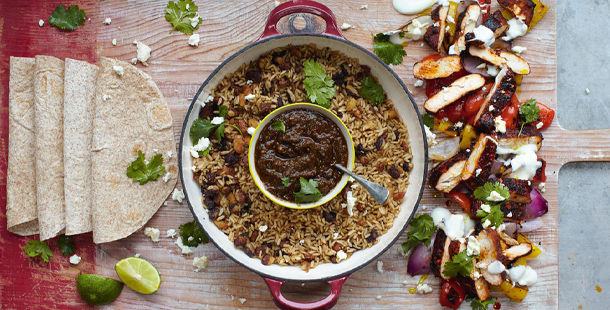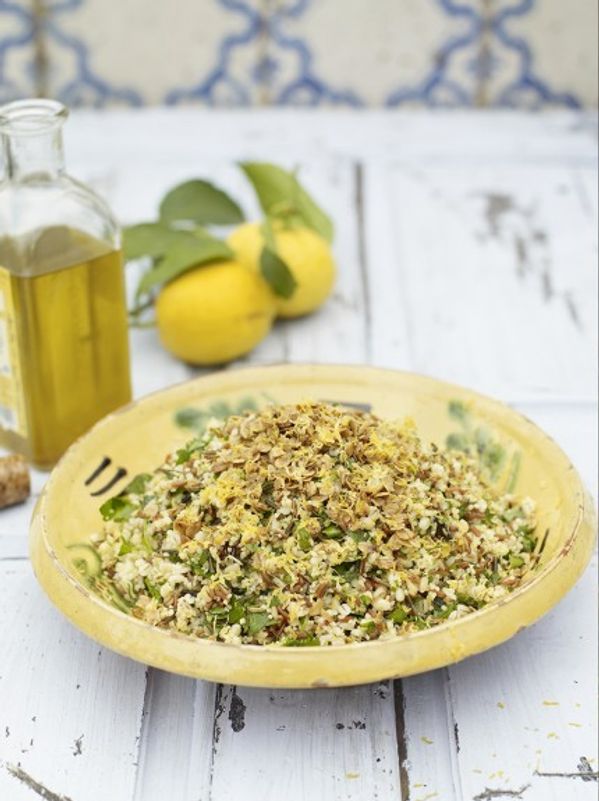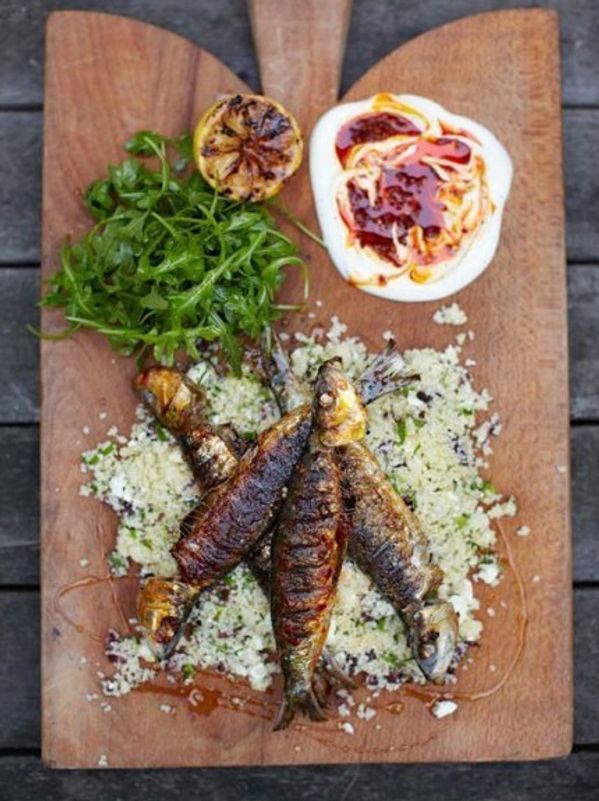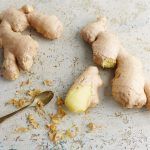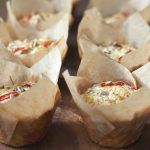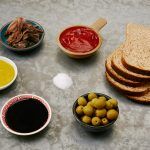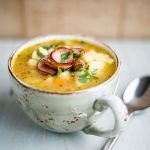A diet that often receives much media coverage and interest is the Paleo diet – also known as the Stone Age, hunter/gatherer or caveman diet. This diet is based on the historic Paleolithic era, which ended about 10,000 years ago. Back then our diet was focused on fish, meat, fruit and vegetables, excluding processed food and the dairy and starchy carbohydrate food groups.
It may well be successful for some people, depending on what your goals are, because it’s not a restrictive diet and weight loss may be rapid in the first few weeks of following it, due to the low carbs consumed. However, Jamie and I are big advocates of a more balanced approach and prefer to incorporate all of the food groups in every main meal, and we strive to do that in his recipes. So, ideally, each meal should be made of one-third fruit and/or vegetables; one-third starchy carbohydrates (such as pasta and rice); and the final third split between milk and dairy foods, protein (fish, eggs, beans and lean meat) and a small amount of foods high in fat and/or sugar (this one’s not a necessity). The Paleo diet encourages the consumption of unprocessed, real, natural foods and the elimination of starch-based carbohydrates from the diet. Jamie and I feel that this food group is an important part of the diet because it’s a good source of energy and wholegrains such as wholemeal bread and wholewheat pasta contain other nutrients, including fibre, iron and B vitamins, required for providing energy to the body.
According to the national diet and nutrition survey, the current fibre intake of adults in the UK is 13.3-13.8g per day, rather low when compared to the recommended daily target of 18g. A diet with plenty of fibre is important to help reduce cholesterol in the blood (which in turn reduces the risk of stroke and heart disease) and prevent digestion problems. A diet rich in starchy carbohydrates, fruit and vegetables is the best way to get plenty of fibre into the diet. It’s easy to fall into the trap of basing meals around pasta and potatoes, because they’re filling and quick to cook. However, there are plenty of other alternatives widely available such as bulgur wheat, couscous and brown rice, all of which are a source of fibre. As ever there is a selection of recipe ideas available on jamieoliver.com to get you inspired when using these ingredients – try Jamie’s Summer four-grain salad, harissa sardines with a couscous salad or sizzling chicken fajitas with rice and beans.
Diets come and go, but our advice always remains the same. The moral of the story is to vary the foods you eat and try out some of the starchy foods I’ve mentioned here today at your next meal.
